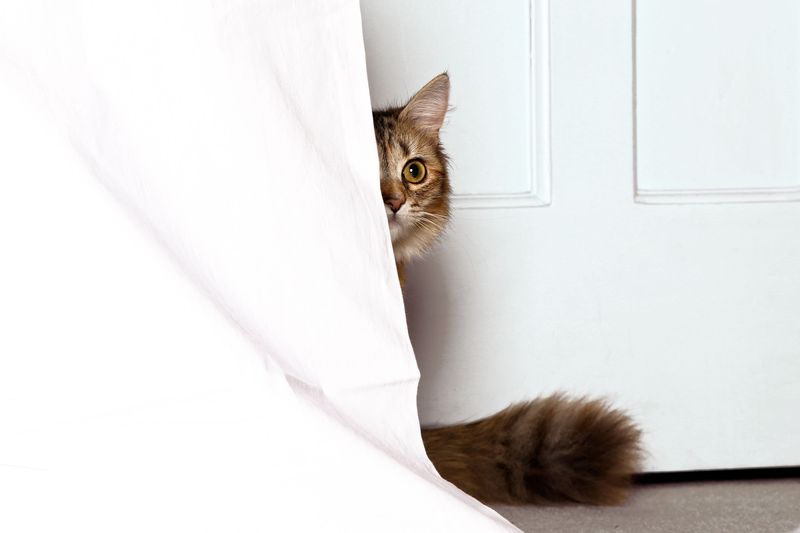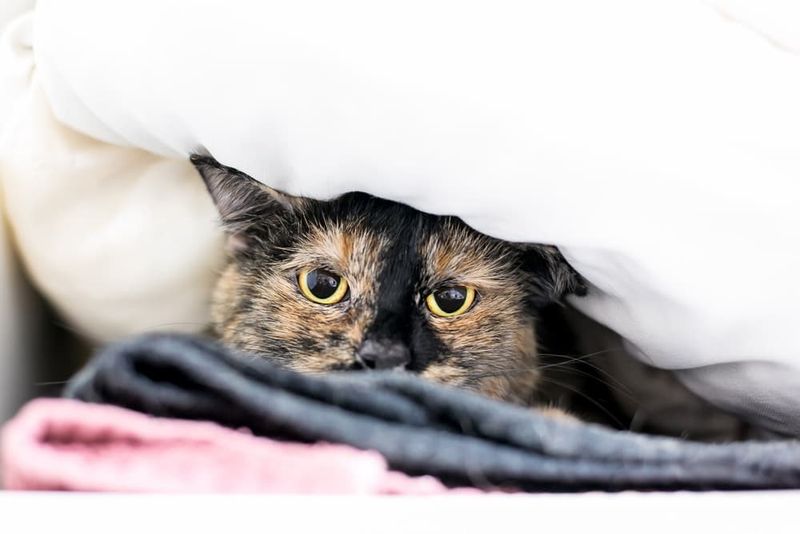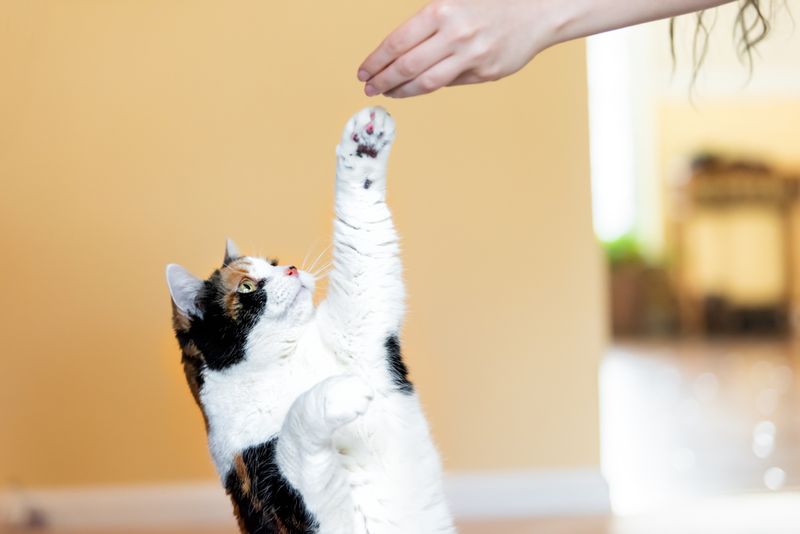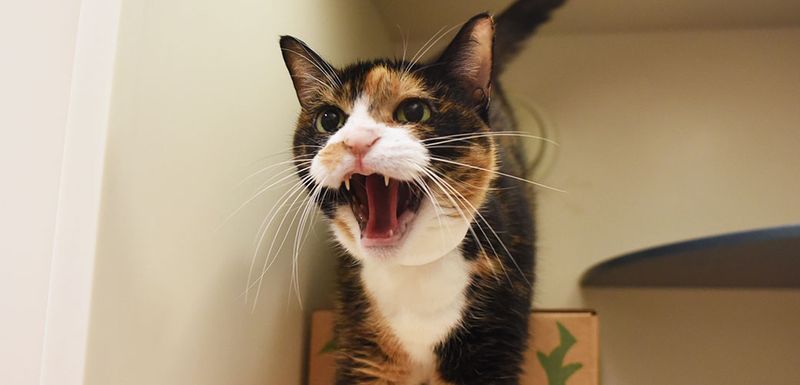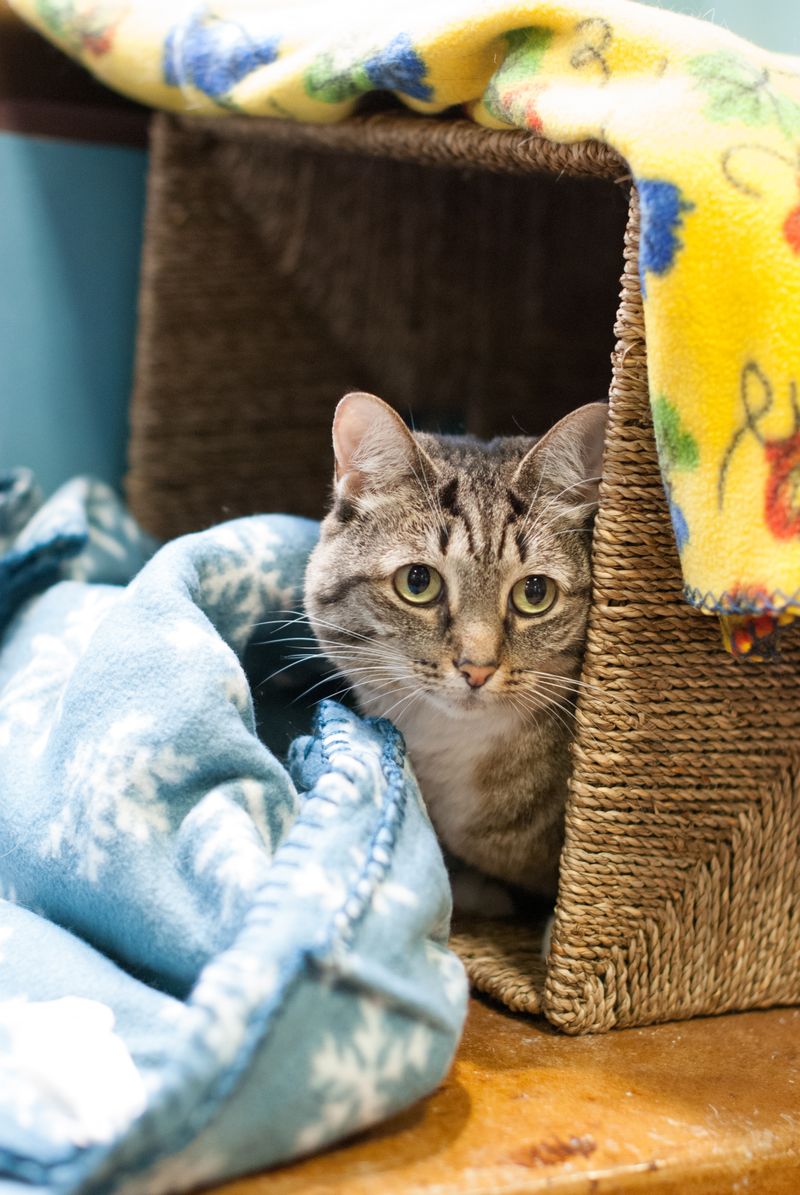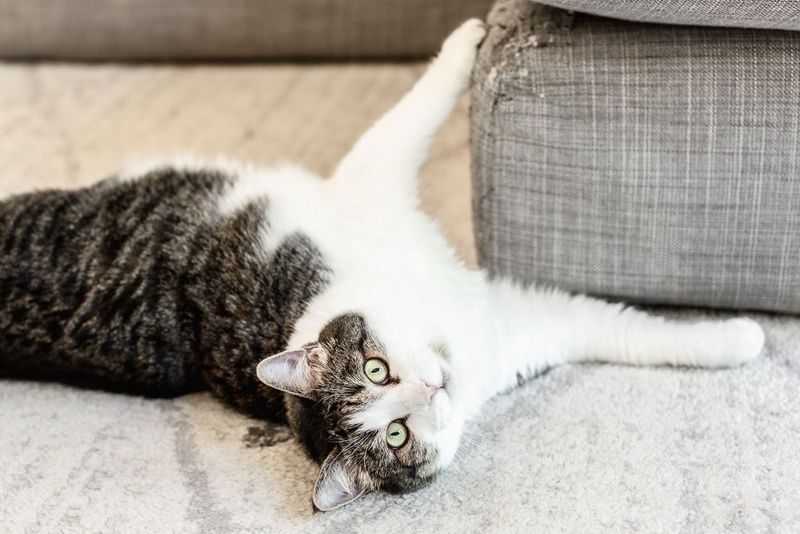📖 Table of Content:
- 1. Cats Don’t Understand Human-Style Discipline
- 2. It Breaks Their Trust in You
- 3. It Increases Stress and Anxiety
- 4. It Doesn’t Teach the Right Behavior
- 5. It Can Lead to Aggression
- 6. It Encourages Hiding and Avoidance
- 7. It Makes Existing Problems Worse
- 8. It Can Cause Redirected Aggression
- 9. There Are Kinder, More Effective Alternatives
Cats are often misunderstood when it comes to discipline. Unlike dogs, they don’t respond to punishment in ways humans expect—and trying to correct their behavior through yelling, squirting water, or physical scolding usually leads to more problems than solutions. What might seem like a harmless reaction to “bad behavior” can actually be deeply damaging to your cat’s trust and mental well-being.
Felines aren’t being “naughty” or spiteful when they scratch furniture, knock items off the table, or ignore a command. They’re simply acting on instinct or responding to an unmet need—like boredom, stress, or lack of stimulation. Punishment doesn’t address these root causes; instead, it confuses and frightens them, often worsening the behavior you’re trying to fix.
If you truly want a well-behaved cat and a strong, trusting relationship, it’s time to ditch the discipline and embrace understanding. In this article, we’ll walk through nine compelling reasons why punishing your cat is never a good idea—and what you can do instead to create a calmer, happier home for both of you.
1. Cats Don’t Understand Human-Style Discipline
Unlike humans, cats don’t have the ability to connect punishment with past behavior. When you yell or scold, they’re not thinking, “I did something wrong.” Instead, they only feel the sudden fear or confusion caused by your reaction. Even if they just scratched the couch, they won’t link your anger to that action. This disconnect makes discipline ineffective. Repetition of punishment leads to anxiety, not learning. Your cat may become jumpy or on edge around you. In short, the message you think you’re sending? Your cat isn’t receiving it.
2. It Breaks Their Trust in You
Trust is the foundation of any healthy relationship, and cats are no exception. Once broken, it can take a very long time—if ever—to rebuild. A cat that once greeted you happily may start hiding or flinching at your presence. Imagine their confusion when the person they rely on becomes a source of fear. Trust isn’t built through force—it’s earned with consistency and care. When cats feel safe, they bond deeply. Punishment chips away at that safety. And once fear replaces comfort, the relationship begins to deteriorate.
3. It Increases Stress and Anxiety
Stress affects cats more than people realize. Loud voices, aggressive gestures, or sudden punishments can raise their cortisol levels almost instantly. That stress doesn’t just affect behavior—it impacts their immune system, digestion, and overall well-being. Even minor scoldings can build up over time, creating chronic anxiety. A stressed cat might overgroom, stop eating, or have litter box issues. Over time, stress-related illness may emerge, which is costly and heartbreaking. Creating a calm, predictable environment is far more effective than any discipline. When cats feel secure, they naturally behave better.
4. It Doesn’t Teach the Right Behavior
Stopping a cat from doing something “bad” doesn’t teach them what to do instead. You might successfully interrupt a behavior, but the underlying need still exists. For example, if you punish a cat for scratching your couch, they’ll likely find another place—maybe even less convenient—to scratch. Cats learn through positive reinforcement and redirection. Providing an appropriate outlet (like a scratching post) and rewarding them for using it builds lasting behavior. On the other hand, punishment leaves them confused and stressed. It creates a cycle where they’re constantly corrected but never guided. That’s not learning—it’s fear.
5. It Can Lead to Aggression
Fear often manifests as aggression in cats. A punished cat may lash out by biting or scratching, especially if they feel cornered. Rather than submitting or “learning a lesson,” many cats go into defensive mode. This is especially common in timid or under-socialized cats. What was once mild misbehavior can quickly escalate into full-blown aggression. Worse, you may not see the attack coming, as they’ve learned to hide discomfort until it’s too late. Your cat isn’t being “mean”—they’re trying to protect themselves. Punishment doesn’t correct aggression; it causes it.
6. It Encourages Hiding and Avoidance
Cats are masters of avoidance when they feel threatened. After repeated punishment, many will begin to hide under furniture, avoid interaction, or retreat when you approach. Even affectionate cats can become aloof if they no longer feel safe. Their instinct tells them to withdraw rather than confront. Over time, you may notice your cat becoming more distant, not less problematic. Instead of correcting their behavior, you’re pushing them away emotionally. A cat that hides isn’t “well-behaved”—they’re just scared. And fear-based silence is not the same as trust.
7. It Makes Existing Problems Worse
Far from solving behavior issues, punishment often intensifies them. A cat acting out may already be stressed, sick, or bored—and punishment adds another layer of distress. When they don’t feel heard or understood, the unwanted behavior often escalates. That means more scratching, inappropriate elimination, or aggression. You’re not dealing with a “bad cat”—you’re dealing with unmet needs. Addressing the root cause is the only effective strategy. Punishment acts like a bandage over a deeper wound. And the longer it’s ignored, the worse things tend to get.
8. It Can Cause Redirected Aggression
Sometimes the stress from punishment doesn’t show up right away—it gets redirected. A cat may seem calm in the moment but later attack another pet, object, or even you. This delayed aggression confuses many owners who don’t realize it’s connected. Cats need a way to process fear, and if they can’t, it comes out in harmful ways. Redirected aggression can fracture harmony in multi-pet homes. You might solve one issue only to create a new one. That’s why calm, consistent responses are crucial when correcting behavior. Prevention always beats reaction.
9. There Are Kinder, More Effective Alternatives
You don’t need punishment to have a well-behaved cat—you need understanding and strategy. Positive reinforcement teaches cats what behaviors are acceptable. Using treats, toys, and praise builds habits through reward, not fear. Environmental adjustments—like more vertical space or scratching posts—solve many problems. Redirection during unwanted behavior is far more effective than scolding after the fact. Cats thrive when they feel secure, stimulated, and respected. A little patience goes a long way. And the reward? A cat who trusts you, listens to you, and genuinely wants to be near you.


